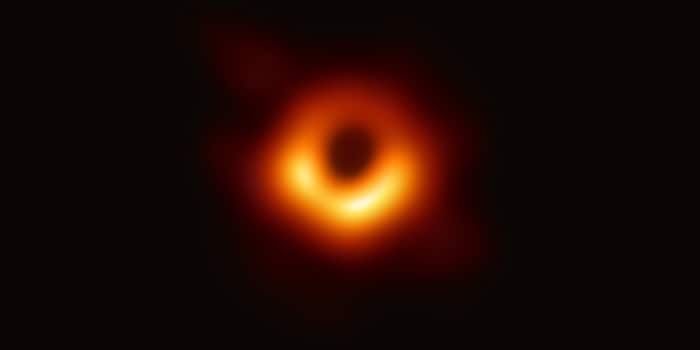

A black hole and a mountain of data
Yeah, science! There it is: at long last, the first ever picture of a black hole. Aside from that, a completely different detail from the press conference fascinated me.
With enormous technical effort, an international research group recently managed to photograph a black hole. The news quickly spread across every news site. No matter if it’s the New York Times, Guardian, NZZ, Luzerner Zeitung or the Hindustan Times, black holes are en vogue.
While reading a Spiegel Online article, I stopped short:
The picture is composed of countless single measurements. Multiple Petabytes of data were collected in 2017/18 by the EHT. They were saved at the telescopes on hard drives and later delivered by post to data centres at the Haystack Observatory in Boston, Massachussetts and to the Max-Planck Institute for radio astronomy in Bonn.
What? By post?!
This is how the Event Horizon Telescope (EHT) was set up: various telescopes around the globe worked together to create an enormous virtual telescope with a diameter of 8’000 kilometres. They all collected data. These mounds of data were then shipped from place to place. The quote doesn’t indicate the true extent of this data mountain, only mentioning Petabytes.
The value can instead be seen in this picture displaying the scientist responsible for compiling the image: 5’242’880 Gigabytes of data were collected by the telescopes all in all.

Let’s assume that an observatory at the South Pole collected 1 Petabyte of data. Let’s also assume there to be a Gigabyte pipeline from the South Pole to the Max-Planck Institute. 1 PB is 1’000’000’000 MB. 1 GBit/s is 125 MB per second. Transferring a single Petabyte of data between these locations would take 92.5 days.
Funnily, a transport vehicle or small airplane filled to the brim with hard drives has a pretty high data threshold. I’m hereby assuming a Petabyte to be transported in a Douglas DC-6. This airplane has a 6’200 km reach requiring 3 fuel stops, taking two hours, let’s say. At 500 km/h, flight time would amount to 32 hours. All in all, 38 hours. Add four more hours to transport the data from the airport to the Max-Planck Institute. The data threshold would average out at 6.5 GB per second. Not bad.
This strategy of transporting data physically even has a name: Sneakernet.
Now it’s your turn
Want to beef up your NAS (German article by Martin Jud!) in order to save your own black hole data? No problem, get 656 WD Red 8 TB hard drives for the low low price of CHF 183’024.–

All in all, they weigh less than half a tonne and can be comfortably transported in this Hi-Tec van:
I'm the master tamer at the flea circus that is the editorial team, a nine-to-five writer and 24/7 dad. Technology, computers and hi-fi make me tick. On top of that, I’m a rain-or-shine cyclist and generally in a good mood.
From the latest iPhone to the return of 80s fashion. The editorial team will help you make sense of it all.
Show all